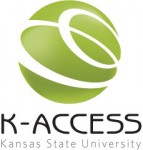(Editor’s note: This is the first article in an ongoing monthly series about technology tools that improve access for all.)
 Online videos are used in many college courses across the country. They bring in dialogue from people in different walks of life and with varied levels of mastery to enhance what is taught in the classroom. On the other hand, many videos are also composed with audio and video, leaving students with hearing and visual impairments without access to much content. There are now a number of great ways to find and create video’s with captions. Here are a couple methods to explore: Google, and dotSUB.
Online videos are used in many college courses across the country. They bring in dialogue from people in different walks of life and with varied levels of mastery to enhance what is taught in the classroom. On the other hand, many videos are also composed with audio and video, leaving students with hearing and visual impairments without access to much content. There are now a number of great ways to find and create video’s with captions. Here are a couple methods to explore: Google, and dotSUB.
Google Video and YouTube can both be captioned by hand. For short videos, this process is easy; longer videos can be tedious, especially with multiple speakers. They are, however, valuable to those who are deaf, hard of hearing, or non-native speakers. Check out this video; it’s worth watching! There are many tools to help you through the process, such as CaptionTube.
Google has also been perfecting automatic speech recognition to create automatic captions for videos in YouTube. See this great page outlining the process.
dotSUB
Online content can also be open to the world for manipulation. dotSUB is an amazing environment for video, where people from around the world watch and enhance videos with captions in many different languages. This familiar video has been translated into 21 languages (one of the most translated). For languages that are a work in progress on the video, the user is told how much is available in their language. (Japanese, for example, is only available for 3 percent of the video.) One can chose from an assortment of videos on the site, or upload a video to see others caption it.
Keep captions in mind as you look for information to enhance your knowledge of a subject area, or as you teach a class and desire to enhance your students’ experience. Many students benefit, not just those with hearing impairments.